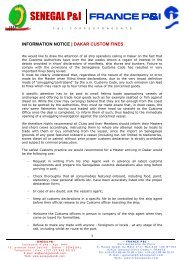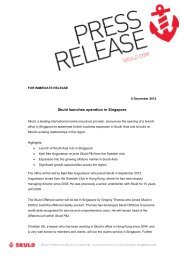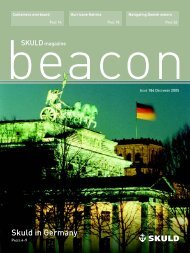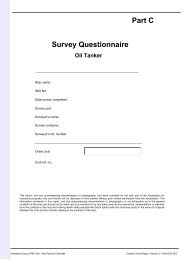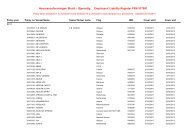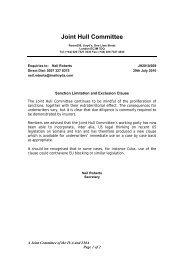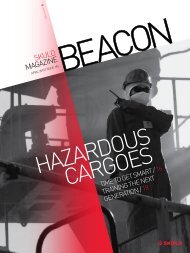You also want an ePaper? Increase the reach of your titles
YUMPU automatically turns print PDFs into web optimized ePapers that Google loves.
Photo: Courtesy of the U.S.Coast Guard<br />
Spill responders shouldn’t replace dedicated, trained bird searchers<br />
Scavenging<br />
Dead birds may be removed from the<br />
shoreline by scavengers before searchers<br />
arrive. Small carcasses (under 500 grams)<br />
can be scavenged by mammals and birds,<br />
such as ravens, and removed from<br />
shorelines quickly (perhaps 66% on the<br />
first day). Large carcasses cannot be<br />
removed by birds or small mammals;<br />
scavenging of large carcasses tends to<br />
occur at night, at rates of less than 8%<br />
per day.<br />
The longer the period between searches<br />
at a location, the more likely it is that a<br />
bird will be removed by a scavenger<br />
before the next search. Greater search<br />
frequency means a smaller multiplier. It<br />
is vital to have systematic, frequent bird<br />
searches, and to document all search<br />
effort, even informal effort, such as that<br />
by the public, SCAT teams, or clean-up<br />
crews.<br />
All spill responders should be told to<br />
look for bird carcasses, to search oiled<br />
wrack before its disposal, and to document<br />
observations. But as this is not responders’<br />
primary function, they should not<br />
substitute for trained, dedicated bird<br />
searchers, distinct from wildlife<br />
rehabilitators, who tend to focus on<br />
live birds.<br />
Background deposition<br />
Carcasses unrelated to the spill need to<br />
be netted out of mortality estimates. Five<br />
to ten percent of the carcasses are due<br />
to ‘background deposition’. The condition<br />
of each bird collected should be photodocumented.<br />
For high multiplier birds,<br />
it is appropriate to fingerprint oiled<br />
feathers and have them necropsied.<br />
Implications<br />
During spill response, bird data collection is<br />
often inadequate or poorly documented.<br />
This leads to insufficient or underestimated<br />
search effort, increased uncertainties<br />
about sinking, the inclusion of carcasses<br />
not related to the spill, and higher<br />
mortality estimates.<br />
These pitfalls, and the USD 30,000 to<br />
USD 60,000 costs that can be associated<br />
with the assumed death of a single<br />
endangered bird, can be avoided. In the<br />
United States and areas affected by the<br />
Oil Pollution Act, knowledge of these<br />
factors and rapid response efforts can<br />
help avoid overly conservative estimates<br />
of bird mortality.<br />
For more information, please contact<br />
Dr. Ted Tomasi at ttomasi@entrix.com.<br />
Searcher efficiency<br />
<strong>No</strong>t all birds on a shoreline are found<br />
during a search. Birds in the wrack line,<br />
small birds hidden in the rocks, and even<br />
birds on open sand can be hard to find.<br />
Bird size and coloration, as well as<br />
shoreline substrate will affect search<br />
efficiency. Experiments suggest that<br />
small carcasses (less than 300 grams)<br />
are found about 60% of the time, while<br />
carcasses over 1,000 grams are found<br />
over 80% of the time. More highly trained<br />
and experienced searchers are more<br />
efficient, serving to lower multipliers.<br />
Photo: Courtesy of the U.S.Coast Guard<br />
DURING SPILL RESPONSE, BIRD DATA<br />
COLLECTION IS OFTEN INADEQUATE OR<br />
POORLY DOCUMENTED. THIS LEADS TO<br />
INSUFFICIENT OR UNDERESTIMATED<br />
SEARCH EFFORT, INCREASED<br />
UNCERTAINTIES ABOUT SINKING, THE<br />
INCLUSION OF CARCASSES NOT RELATED<br />
TO THE SPILL, AND HIGHER MORTALITY<br />
ESTIMATES<br />
Experiments show that birds over 1,000 grams are<br />
found 80% of the time. The smaller the bird, the more<br />
likelihood of it remaining unfound<br />
BEACON 15


